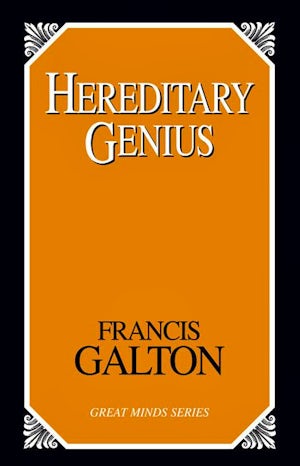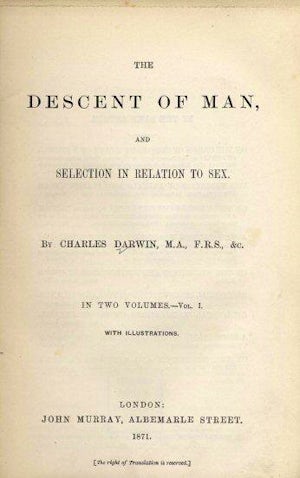W. Eric Harris' Achates, or the Future of Canada in the Empire is published in the To-day and To-morrow Series
1928. Written as a direct response to Columbia, or the Future of Canada (Godwin, 1928), at the behest of the publishers of the To-day and To-morrow series, Achates, or the Future of Canada within the British Empire (1929), by W. Eric Harris, predicts an equally rosy picture for this burgeoning nation, but one solidly within in the bosom of the Empire and its Commonwealth of Dominions. Achates was a “good and faithful companion” of Aeneas in Virgil’s Aeneid, now immortalized as a personification of fidelity and loyalty. Whereas Godwin’s brief Canadian residency was in British Columbia and reflects that particular western bias that is still familiar today to Canadians west of the Manitoba/Ontario border, Harris is an unapologetic, dyed-in-the-wool imperialist from Ontario.
Harris begins the longest ‘Foreward’ in the series by addressing and dismissing the assumptions, exaggerations and contentions of Godwin’s main thesis that Canada will inevitably become part of the United States. Harris flatly denies this future, although he does predict a continuing close cooperation and alignment between the two countries, which he argues is the envy of the world and an example to peace-loving peoples everywhere. Afterwards, there is little direct mention of Columbia. The first chapter begins with a lengthy disclaimer about the futility of trying to predict the future, especially one so bold as to encompass an entire century. Thereafter absolved of the ultimate responsibility for his prognostications, Harris goes on to equally bold forecasts, but always anchored in unswerving Imperial membership, Anglo-Saxon dominance and continuous, dynamic progress.
Discussing “The International Outlook,” Harris begins by narrating an allegorical hinterland story of a group of beavers building a dam on a small stream near his cabin, to illustrate the hard work and cooperation required to subdue the wilderness and bring Canada fully into the modern world. When the beavers are slaughtered by an external predator during the first winter, he segues into Canada’s participation in World War I, especially its contributions in ‘Flanders fields’ and at Vimy Ridge. Harris rails that a merger with the United States “to become just nine minor states on the northern periphery of America” would constitute a betrayal and loss of faith to those brave soldiers who fell, and the men who sacrificed life and limb in the building of British America. Harris hails the post-war treaties and pacts (Locarno treaty, Kellogg pact, Dawes plan, etc.), raises Canada’s potential role as an exemplar for the world as part of the League of Nations, as necessary preludes to securing a peaceful future for building a modern, prosperous nation. But he also predicts with uncanny accuracy the potential global hot-spots of the future, including those ongoing ethnic and political tensions that produced World War II, and those regions that to this day are embroiled in war and political strife. Harris also predicts the rise of the United States to “greatest Imperialistic power left in the world,” but still argues that Canada’s greatest opportunity for promoting peace on the world stage is as part of the British Empire: “Only within the Empire can Canadians find their maximum opportunity for making any worth while world contribution to this end” (32).
In Chapter III, Harris turns to the domestic outlook and “The Popular Attitude.” It is here that perennial eugenics’ issues make their first appearance. Like Columbia, there is no overt mention of eugenics as a ‘branded’ meme, or an active program, but like Godwin (1928) there is considerable coverage of racial issues, immigration of non-Nordics, and the conservation or preservation of WASP values and traditions. After detailing evidence for the continued “strong Imperialistic sentiment which is inherent in” British Canada, Harris discusses “the cry being heralded throughout the land that, for the first year, there has been a less number of British immigrants arrived in Canada than of immigrants from the Continental nations of Europe” (36, 37). He asserts that “anyone familiar with the real feeling of the country cannot doubt but that Canadians want to see their country filled up with people of British stock” (44). While not nearly as bullish for the ‘Slavic peasant’ as Godwin’s Columbia, Harris grants them an important ecological niche as pioneers of the prairie hinterlands. He admits Britons have not taken well to clearing and breaking virgin land on the vast western steppes (partly because they have had so many other opportunities that do not entail such back-breaking toil and strife), and thus recommends off-loading this arduous life to those better suited and more willing, with a nod to Godwin’s patented phrase for his iconic Slav peasant:
Investigation seems to make it evident that the only types which can be recruited, in the numbers required, to do this essential type of pioneer work are the peasant peoples of Central and South-eastern Europe. As before, the first economic need of the [prairies] is for the man “with the sheepskin coat and the big broad wife.” (p 45, 46)
Harris assuages fears of “racial problems” in an influx of “some few millions of these peasants” since the country has “developed a strong national consciousness.” On completion of this vast pioneering project “would permit the further assimilation, in a variety of occupations, of hundreds of thousands of immigrants from the British Isles” (46). He reminds nervous ‘loyalists’ that:
the second generation of foreign immigrants of foreign [not British] immigrants become good Canadians and that these races have a substantial contribution to make to the culture of the country. The fact that nine-tenths of the Canadian people were born within the Empire means that they command an overwhelming influence within the country, and that they have developed a power of assimilation sufficient for the purpose in mind. (p 46, 47)
This prevailing Imperialistic sentiment, the ability to assimilate others and to promote peaceful self-government in Canada is asserted to be part of the British-Canadian character: “Canadians are British, and it is in the blood of Britons to be free” (62). In discussing Canada’s future status and its place within the Empire and on the world stage through our place in the League of Nations, Harris uses Canada’s experience with “the existence of two races” (British and French) side-by-side in peaceful coexistence as an exemplar for the world that bears emulation. However, the same tolerance and cooperation that blessed British-French relations is not explicitly extended to Canada’s relationship with its Aboriginal peoples. Whereas Godwin had condemned Canada’s Aboriginals to “drinking himself out of existence in the comfort of those spacious reservations that had been secured to him” (Godwin, 1928, 92), Harris makes no mention of them, except as historical figures in the earlier Indian Wars and the British conquest of the East, and nowhere do they figure in Canada’s bright future within the Empire, or even as a surviving enclave of pre-Colonization North America. They are simply absent from the scenery of the future.
It is in the predictions for Canada’s potential for future expansion, immigration and industrialization that Harris’s Achates departs most from Godwin’s Columbia. Where Godwin predicted an initial rapid industrialization followed by a radical “return to the land movement,” Harris sees unbridled opportunities for continued expansion of the frontiers, a slow and ongoing process of industrialization and civilization, led by British-Canadians with a constant influx from the Motherland into skilled occupations and managerial positions. Harris devotes substantial space to Canada’s vast agricultural, mineral, and hydroelectric potential, and its burgeoning fossil-fuel energy reserves, including the newly discovered tar sands of the Peace River country. His detailed assessment of the future potential of this region (where I spent a good part of my life, and my French/Sioux and Germanic/Slavic maternal grandparents helped to pioneer) is worthy of quoting as a microcosm of the entire developing nation’s future progress and destiny:
There is an area in the country as large as France, Germany, Belgium, Denmark, Holland, and Great Britain, with similar climatic conditions, the development of which has scarcely commenced. This is the Peace River area. It is an area which can produce fifty to sixty bushels to the acre of the best quality wheat, whereas a twenty acre yield on the prairies is a good yield. It has inexhaustible deposits of the highest grade steam-coal. Its rivers can supply twenty million horse-power of electrical energy whenever it is needed. It has tremendous deposits of all the minerals, of gypsum and of salt. There are eighty million barrels of oil in its tar sands just waiting for the development of an economic process of extraction. People who know this area the best, claim that it will be able to support millions of people, in ease and comfort. There is justification even for the following statement of one enthusiast: “It is the last and yet it is the richest, the most salubrious and the most beautiful region of the world to be explored, exploited and colonized by civilized man.” (p 76, 77)
Harris argues population is the only thing needed for Canada to seize its destiny, using the California Gold Rush as the American catalyst for western expansion, as a metaphor for Canada’s imminent expansion and “filling-up of the empty spaces” (78). He predicts a national population of “over a hundred million” by the end of the 20th Century, equaling the population increase of the United States in the last seventy-five years.
-Michael Kohlman
Godwin, G.S. (1928). Columbia, or the future of Canada. London: Kegan Paul, Trench, Trubner & Co.
Harris, W. E. (1929). Achates, or the future of Canada in the Empire. London: Kegan Paul, Trench, Trubner & Co.
 1869:
Galton publishes Hereditary Genius
1869:
Galton publishes Hereditary Genius
 1871:
Charles Darwin publishes The Descent of Man
1871:
Charles Darwin publishes The Descent of Man